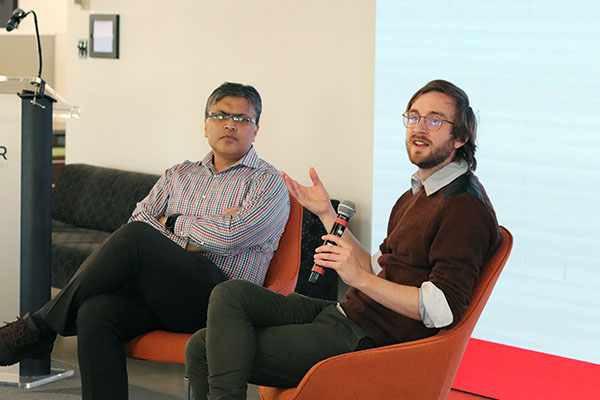Nov 01, 2024

Event Recap: What Makes a Good Quantum Computing Project – CNRL’s Tailings Pond Project as a Case Study
CRIN was proud to host a Digital C3 discussion on October 30 focused on quantum computing and a CNRL tailings pond project as a case study.
Adam Bene Watts, Scientist in Residence at Quantum City, a pan-provincial institute at the University of Calgary with a mission to build the quantum ecosystem in Alberta, gave some background on the institute and the work it does.
“Our goal really is to start with the non-quantum industry, start with the real-world problems that might benefit from quantum, and then to bring that information back, those projects and knowledge back to the industry and academia and what we call quantum solution providers,” he explained.
In February 2025, Quantum City will be opening qHub, a collision space for quantum researchers, users and creators, including startup incubation, a knowledge centre, and a membership program. A qLab is also in development to be located in qHub to serve both research and industry.
What is a quantum computer?
A quantum computer is a machine that processes classical input to classical output but through a different set of operations. At a hardware level, a quantum computer is different – the basic operations that are being implemented are a richer class of operations than the binary yes/no decisions that computers make.
Currently available quantum computers are shallow, meaning the amount of time you can process information is limited, the size is limited, and they are noisy, meaning that the operations that do get implemented on a quantum computer might not be the ideal ones.
But despite these limitations, these machines appear able to perform tasks which classical machines cannot.
The potential applications of quantum computers could apply across sectors, Bene Watts said, including energy, pharmaceuticals, logistics, and finance. Another area where quantum technology shows promise is in optimization problems, such as optimization of supply chains.
Quantum technology is still “very much in the R&D phase,” Bene Watts said.
But the reason to do a quantum computing project now is to start preparing for quantum computers when they come along.
“In industry, if you’re planning on using quantum computing eventually, now is a great time to get to know the people building quantum computers,” Bene Watts said. “Now is a great time to steer the field as a whole in what it thinks about and where the first new algorithms get developed.”
CNRL Case Study: Tailings Treatment
CNRL opted to see how quantum computing might solve the decades-old problem of tailings ponds and what is preventing negatively charged, water-suspended clay particles from aggregating into larger particles that would settle more readily, which in turn prevents the building of reclamation soils on top. CNRL partnered with a quantum team at Accenture on the project.
Abu Junaid, technology innovations project engineer at CNRL, said what CNRL sought to get out of the challenge is understanding what the barriers are.
Bene Watts said Accenture used a quantum machine learning approach to predict how flocculants would affect the settling rate of tailings ponds.
They showed a small quantum neural network outperformed similarly restricted classical neural networks.
Junaid noted using different kinds of coagulants to neutralize charges works in some circumstances and not in others. The problem had been difficult to model in classical computing.
“We simply didn’t have the ability of computational power to simulate that environment and understand," he said.
"So, this is where we’re trying to get answers from quantum computing with this new computational ability. If this is the structure of certain materials and tailings, how are they going to interact where they’re actually helping and neutralizing the charge - and if not, then why not. And if a certain chemical is not working, then which chemical can work. It potentially leads to even developing a completely new set of chemistries that will be way more effective.”